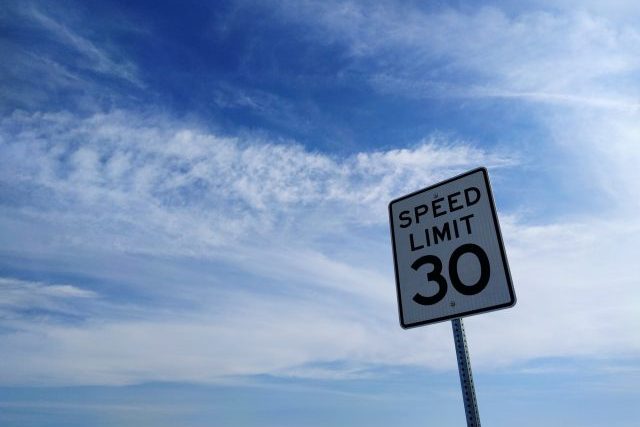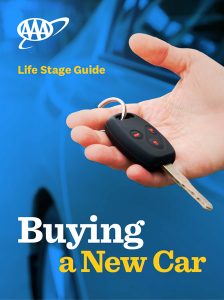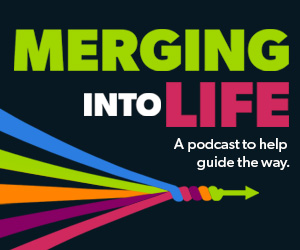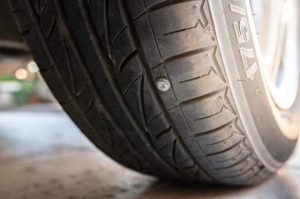Drivers desiring faster commutes might want a higher speed limit, but it may not be the safest choice. What about the safety of pedestrians, cyclists and others?
The AAA Foundation for Traffic Safety has found that raising posted speed limits could lead to more crashes, injuries and deaths. Now, new research reveals that highway speeding can also impact surrounding communities.
Speed and Safety
Speeding contributes to more than a quarter of road fatalities, according to the National Highway Traffic Safety Administration, making it a significant safety concern. Still, many states have steadily raised their posted speed limits.
Since 2018, the AAA Foundation has conducted several studies examining the effect of posted speed limit changes on safety. In the first study, traffic engineers were asked how posted speed limits are set and what factors they consider in changing them. In the second phase, crash testing revealed that small speed increases have severe and potentially deadly effects on crash outcomes.
Finally, before-and-after assessments analyzing crash and speed data were collected from multiple sites where posted speed limits were changed (raised or lowered), to examine the differences. While raising posted highway speed limits was associated with increased crash frequencies in some situations, results varied.
The study also found that the likelihood of speed limit violations increased after lowering posted speed limits, suggesting the need for better public awareness education tied to these changes.
Changes in travel times were small in response to both raised and lowered speed limits.
The safety of any roadway depends on a range of factors. AAA recommends changes in posted speed limits consider the type of road, surrounding land use and historical crash data. AAA supports automated speed enforcement where appropriate, but programs must be carefully implemented to maintain community support, prioritize equity and consistently improve safety.
Speeding Spills Over
A new report by the AAA Foundation shows that spillover speeding from the highway can threaten neighborhoods near exits.
“When it comes to local roads used by drivers, pedestrians and cyclists alike, responsible speeds are paramount to ensuring we all get home safely each day,” said Mark Schieldrop, Senior Spokesperson for AAA Northeast. “Unfortunately, in many neighborhoods near highways, local streets are treated like racetracks rather than places where people live and work.
Researchers investigated whether changes to posted speed limits on interstate highways could cause drivers to adopt risky speeding behaviors on local streets, looking at crash data before and after speed limit increases on interstates in Georgia, Michigan and Oregon. Hot spot analyses on roads within a one-mile radius of interstates revealed many instances where speed-related crashes increased on nearby roads following the interstate speed limit change, suggesting that drivers exiting the highway continued their faster tendencies.
“The findings serve as a reminder to drivers to curb their speeds when they exit a highway,” Schieldrop added.
The Road Ahead
While at least eight states were considering raising speed limits last year, the benefits are overrated, and the risks are understated. Increasing speed limits does not always yield the positive results envisioned by traffic planners.
“It is critical to consider the safety implications when local transportation authorities contemplate making changes to posted speed limits,” said Mary Maguire, Vice President Public Government Affairs at AAA Northeast.
AAA urges transportation officials to apply a holistic approach when setting or changing posted speed limits and prioritize safety over speed and capacity.
Share you thoughts on raising or lowering speed limits in the comments below.
This article has been updated and republished from a previous version.
5 Thoughts on “Raising the Speed Limit May Raise Risks”
Leave A Comment
Comments are subject to moderation and may or may not be published at the editor’s discretion. Only comments that are relevant to the article and add value to the Your AAA community will be considered. Comments may be edited for clarity and length.
















Raising the speed limit is a dangerous idea and an equally dangerous risk. There’ll only be more accidents, more deaths, and more permanent maimings, as a result. The posted speed limits are the fastest speeds that one can go in ideal conditions, meaning when it’s a nice, dry and sunny day, with no precipitation, and when the paved roads are in mint condition, with no pot holes, frost heaves, or whatever. Driving at night is not an ideal condition, so it’s a good idea to slow down while driving at night, as well.
Let’s start by re-educating drivers that the “left” lane is for passing only. Too many drivers just sit in the left lane barely doing the speed limit and causing huge backups. Use the left lane for passing only! These slow drivers are causing road rage. In regards to the speed limit, the speed should definitely be increased. Drivers are already exceeding the speed limit. 75-80mph would be ideal.
Don’t blame road rage on slow speeds. Raising speed limits won’t eliminate or cure someone’s road rage. Confining slower drivers to the right lane is not always a practical choice for the slower driver.
The cause of road rage resides in the person who is suffering the road rage. That person is not the victim of the slow driver: that person is a victim of his own inability to handle frustration and a lack of concern for other drivers.
Someone who _acts out_ road rage is dangerous and shouldn’t have a driver’s license.
Raising the speed limit does not cause any more or less incidents of accidents. Accidents will happen on highways, private roads , intersections, atv trails, etc. Some are avoidable, some are not. With the increase in population and the failure of government to forecast the need to expand ALL ROADWAYS there need to be an increase or deal with an increase in road-rage, longer drive times, increase in pollution, global warming, etc. I’ve been driving for over 35 years and have done personal research and observed the unofficial increase in the speed limit. Overall the normal unofficial highway speed limit is between 75-85mph. This has been like that for a number of years now, with no change in occurrences of accidents.
That’s a bunch of hogwash, Christopher. Raising the speed limit is a dangerous idea, and it puts everybody in danger. Come on now.